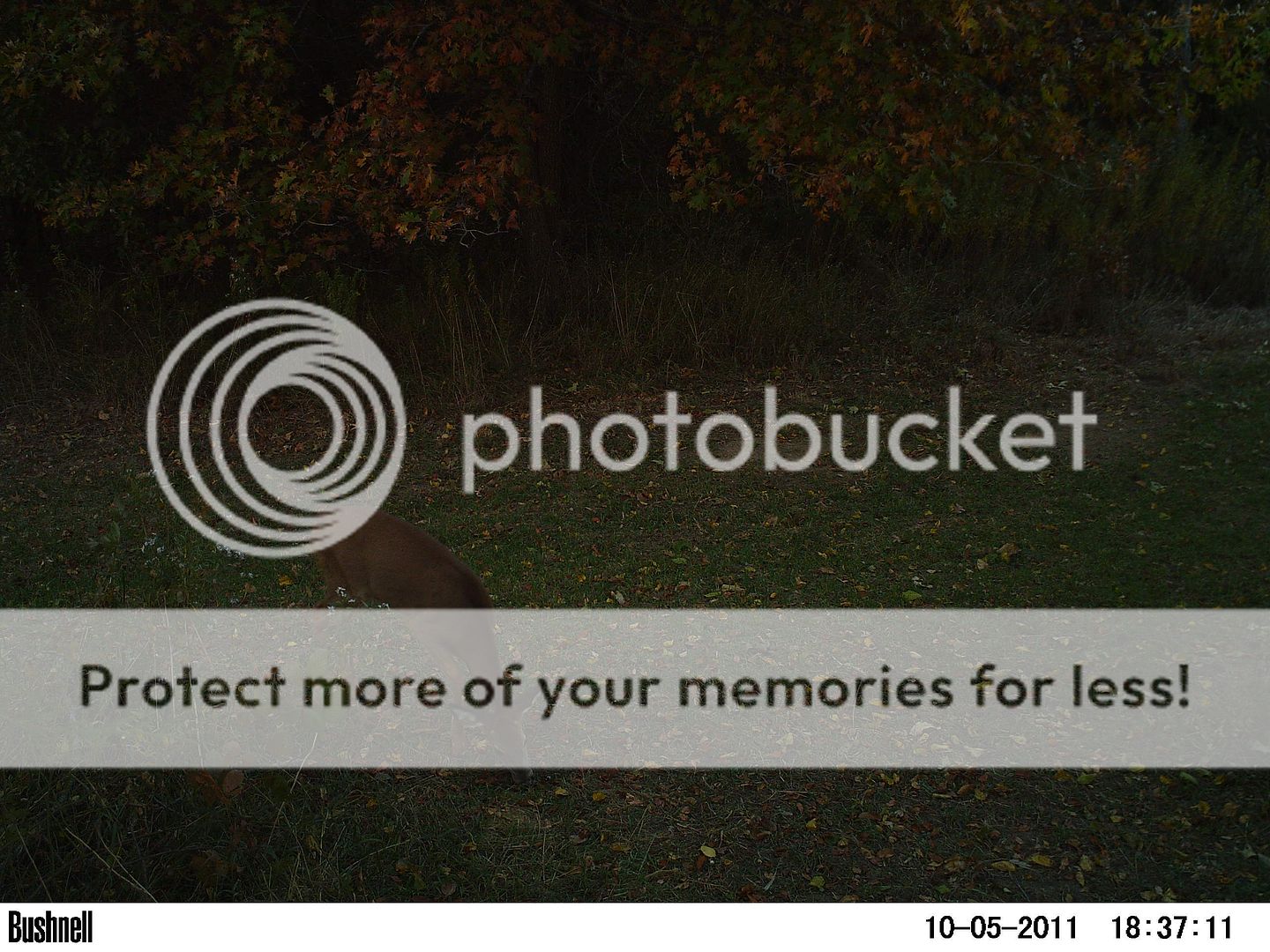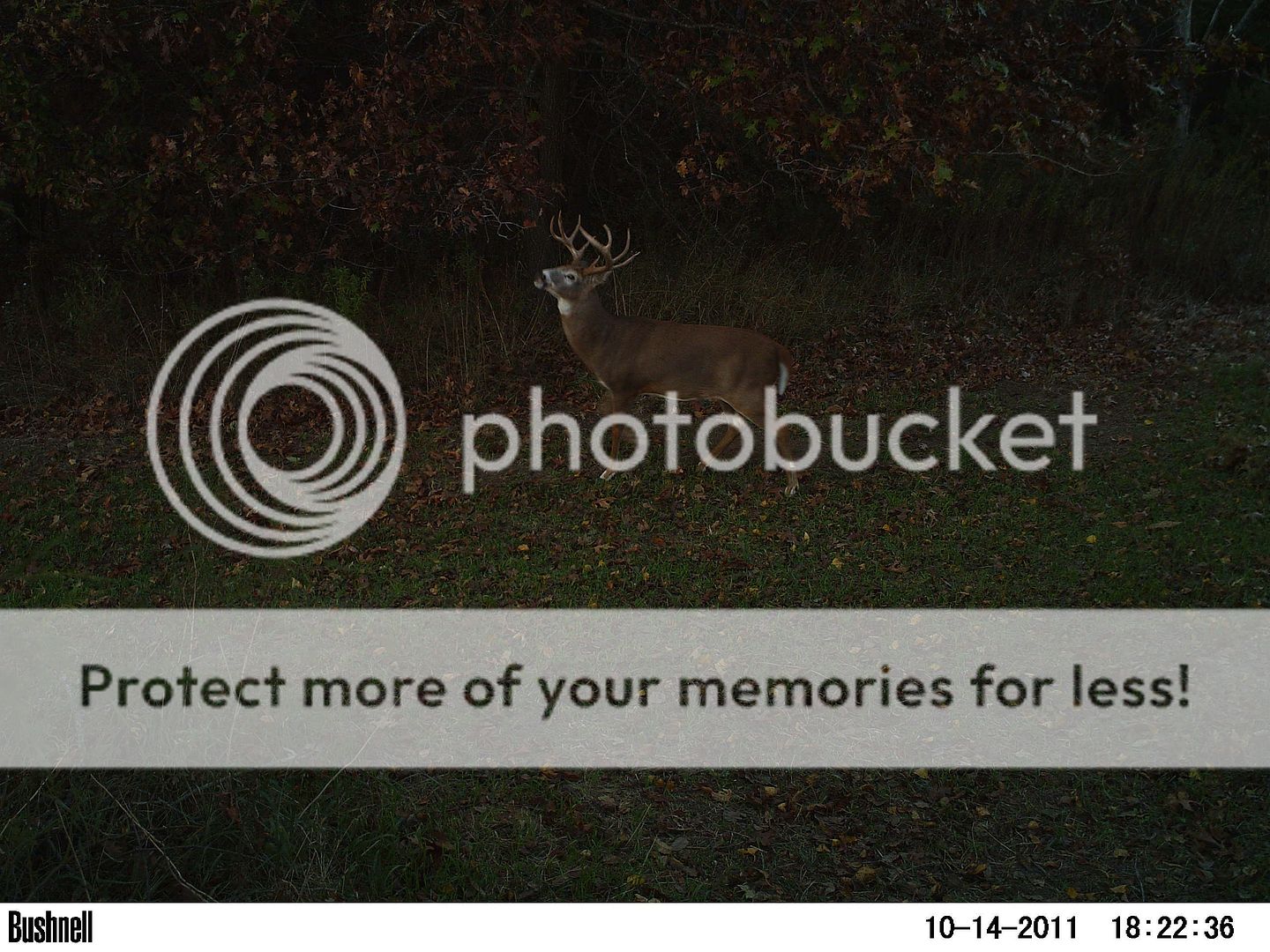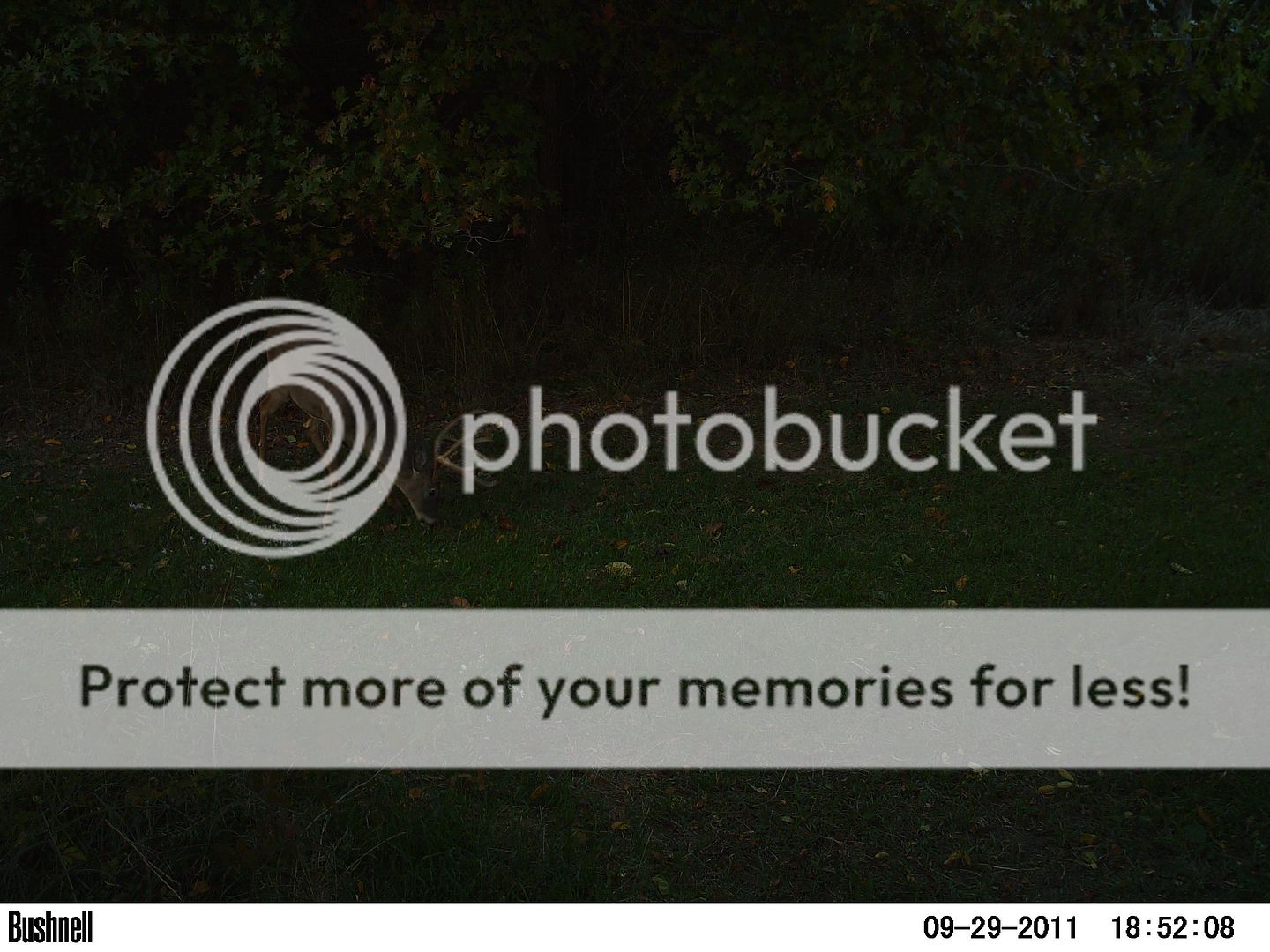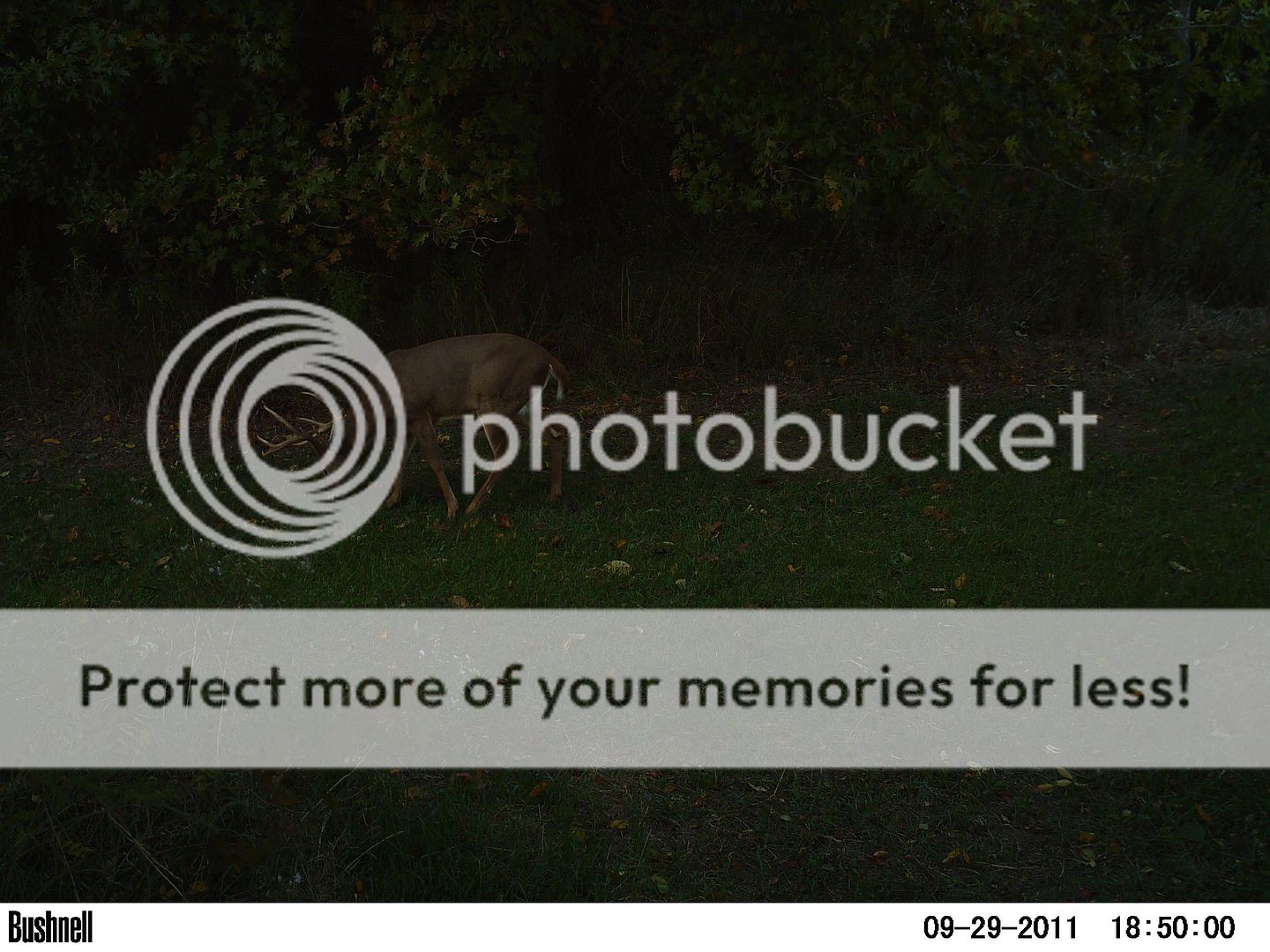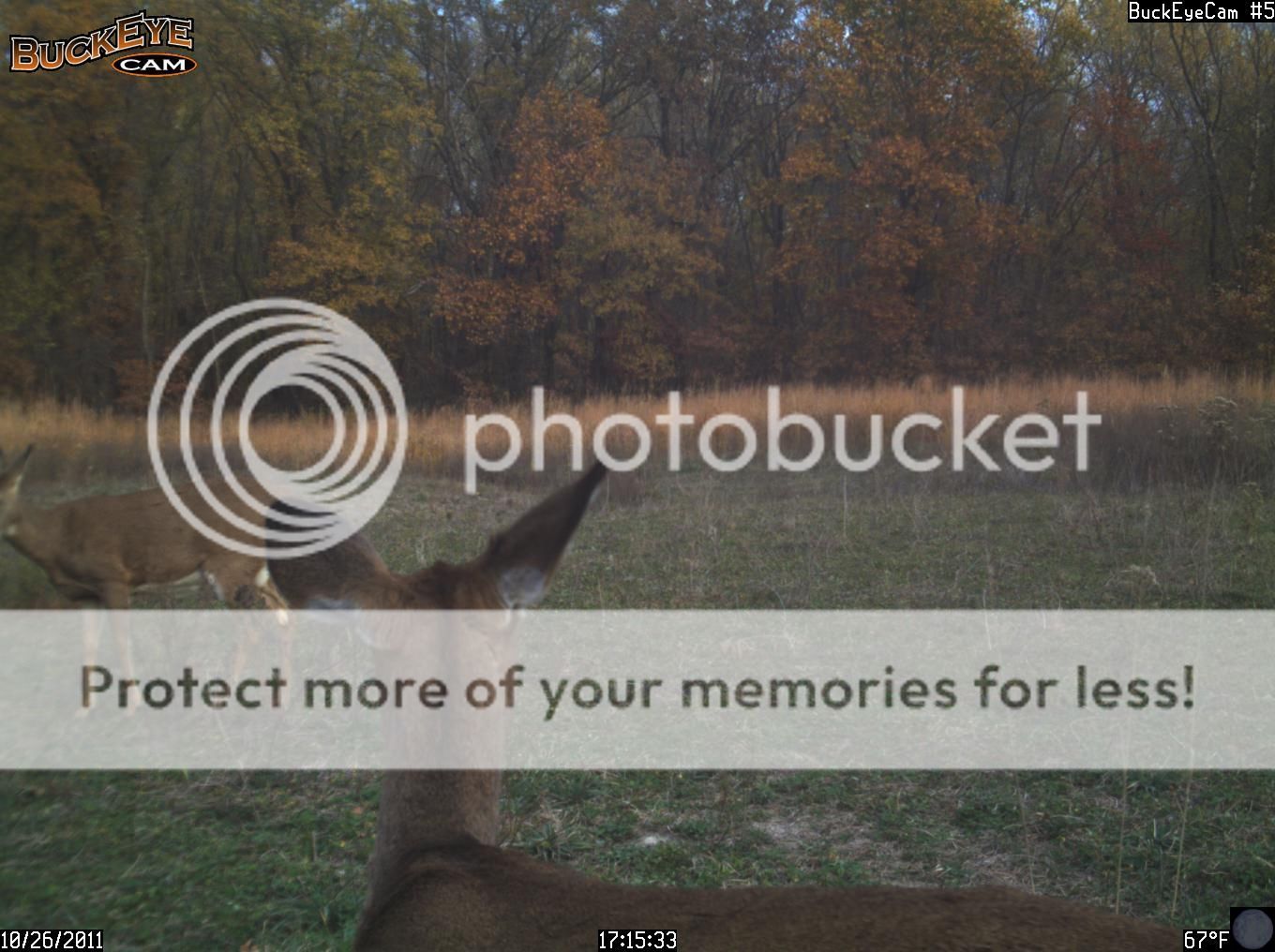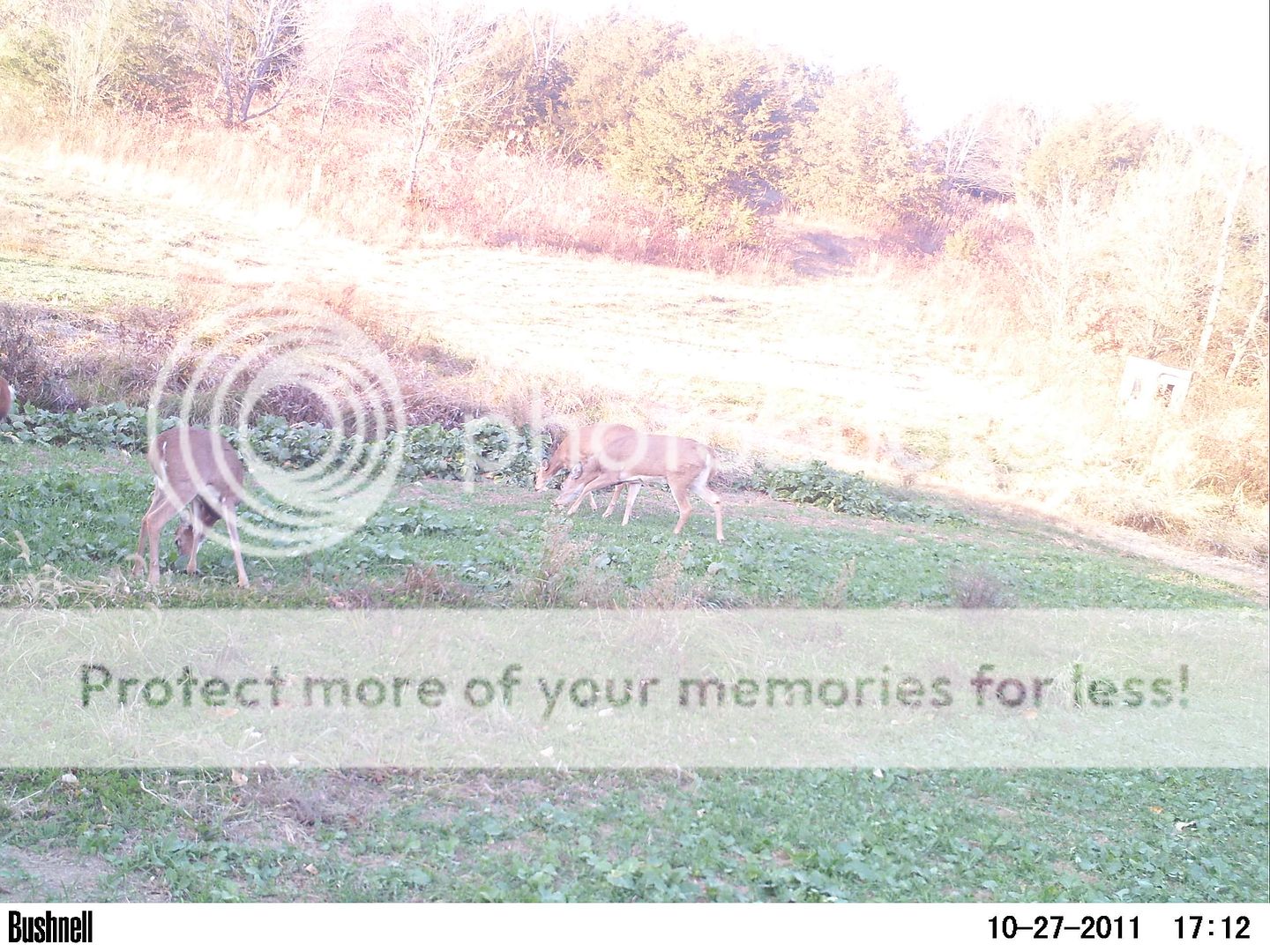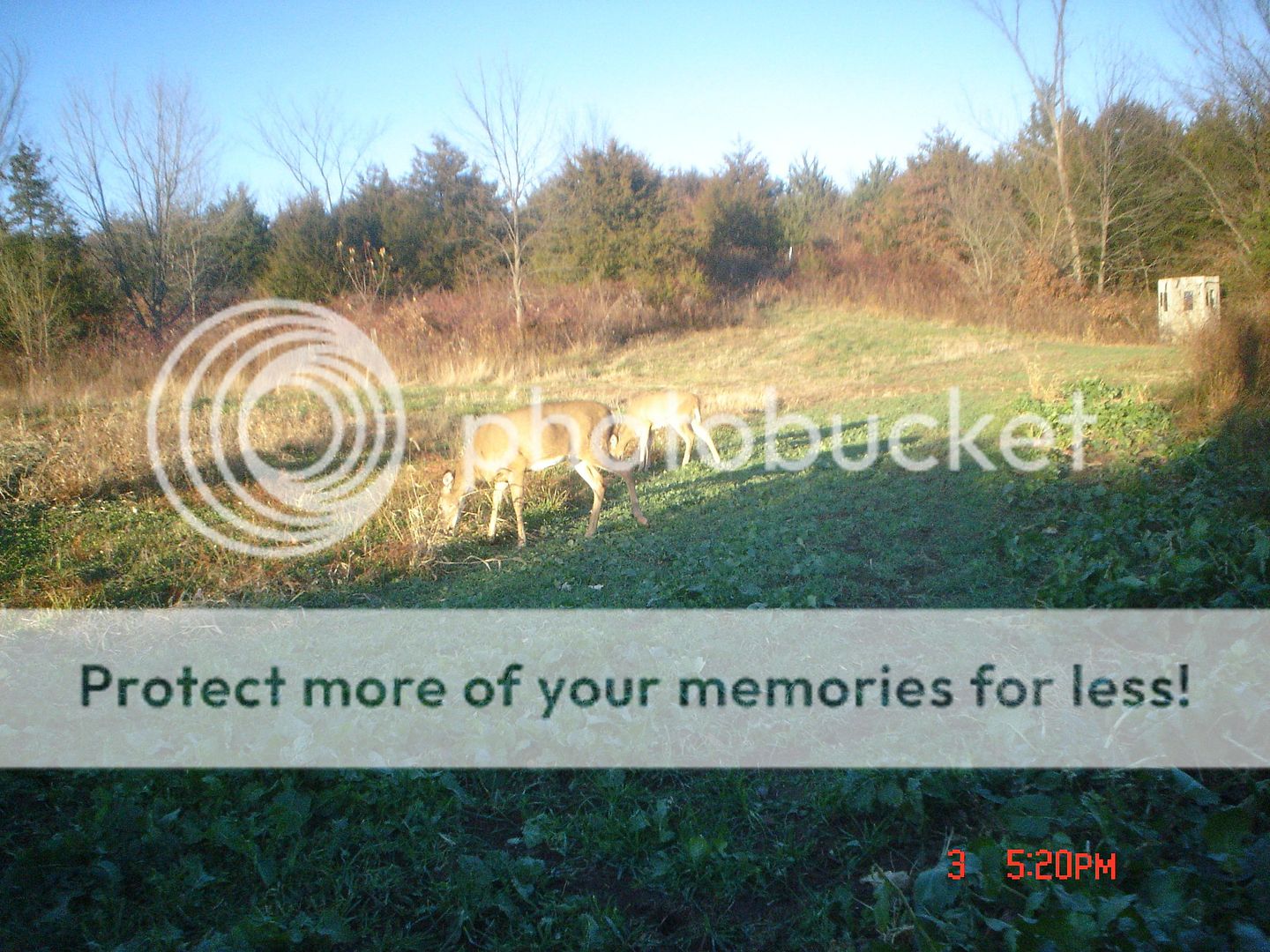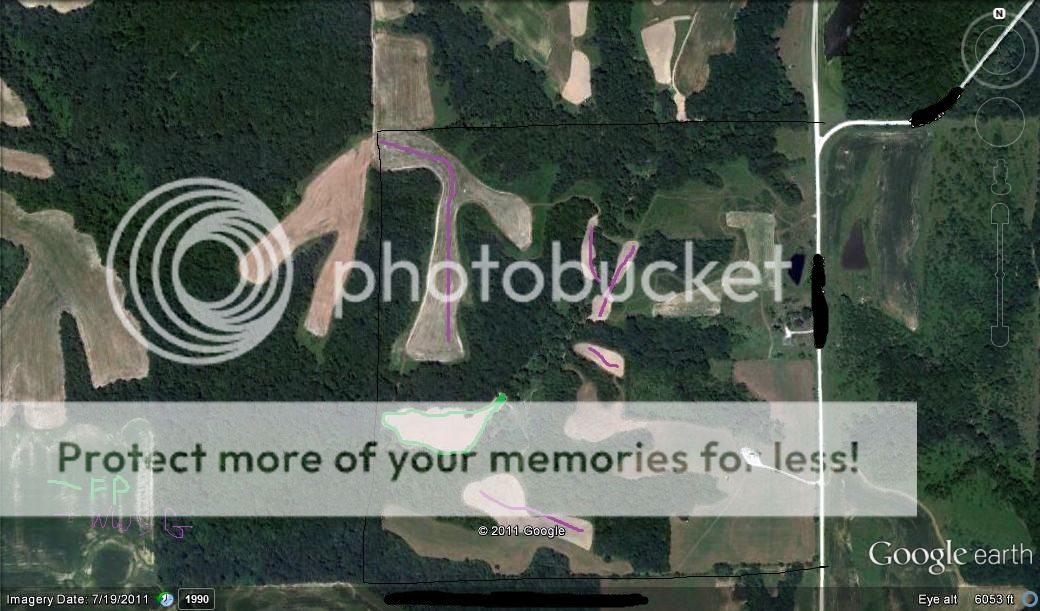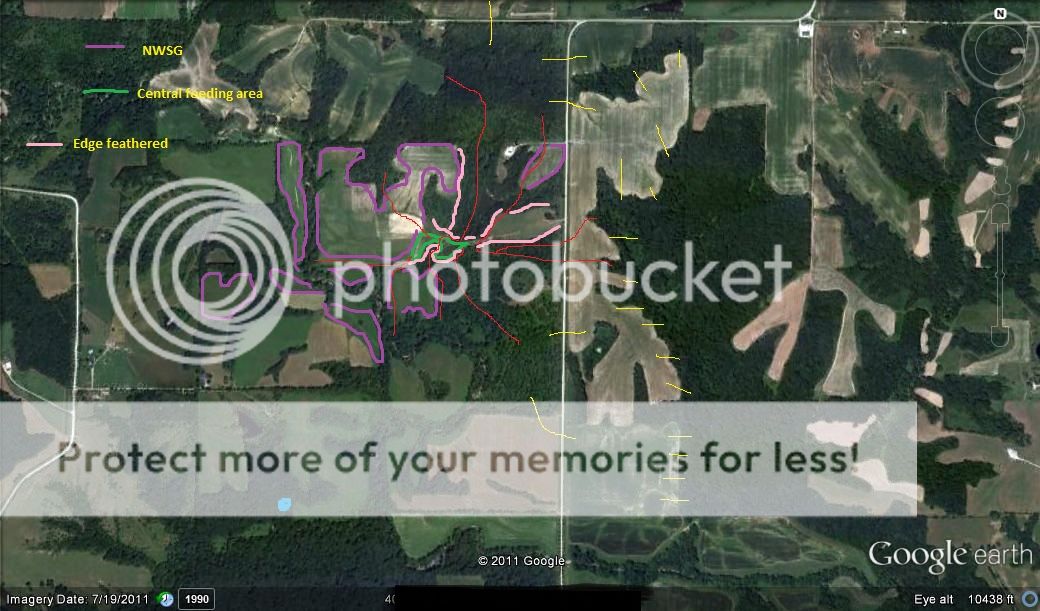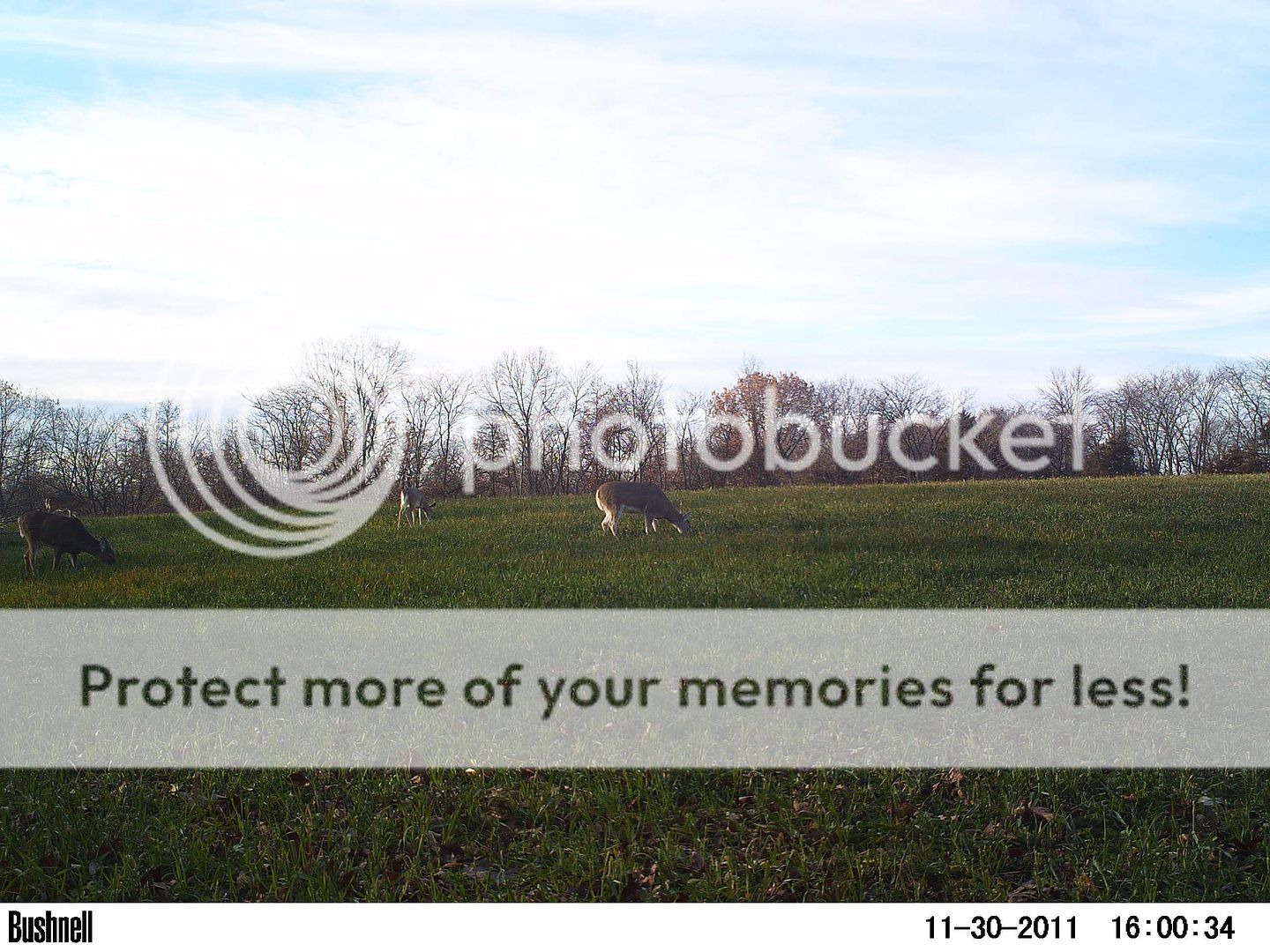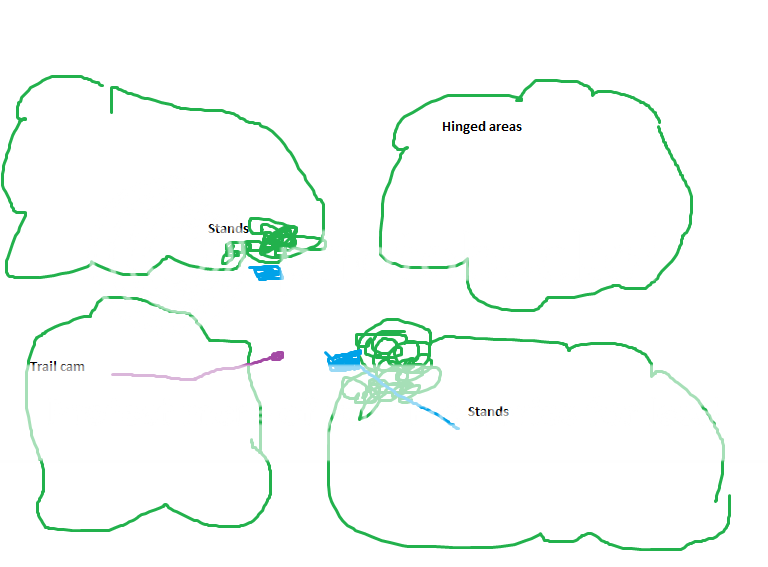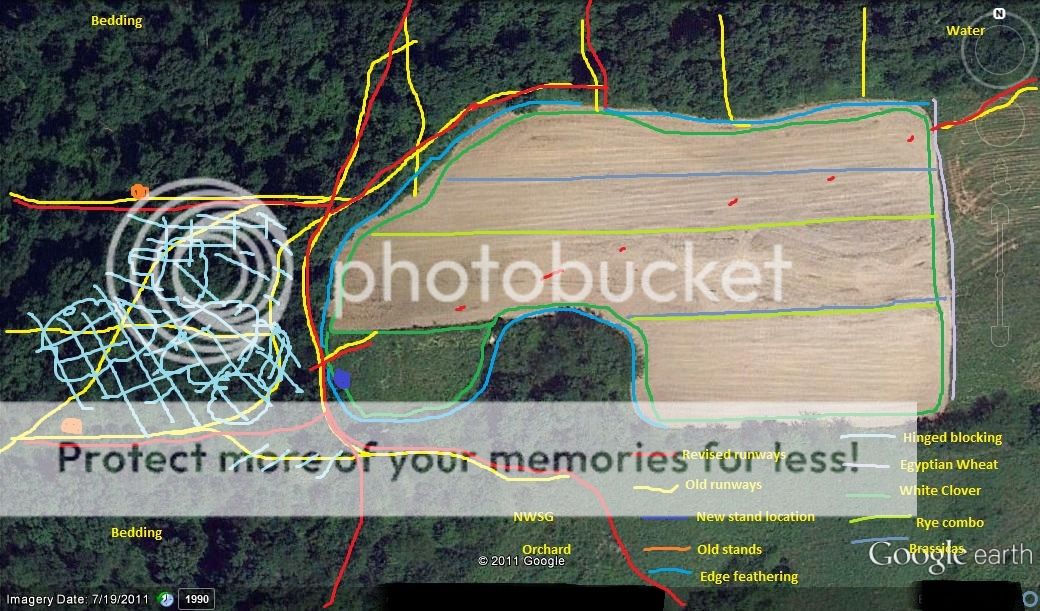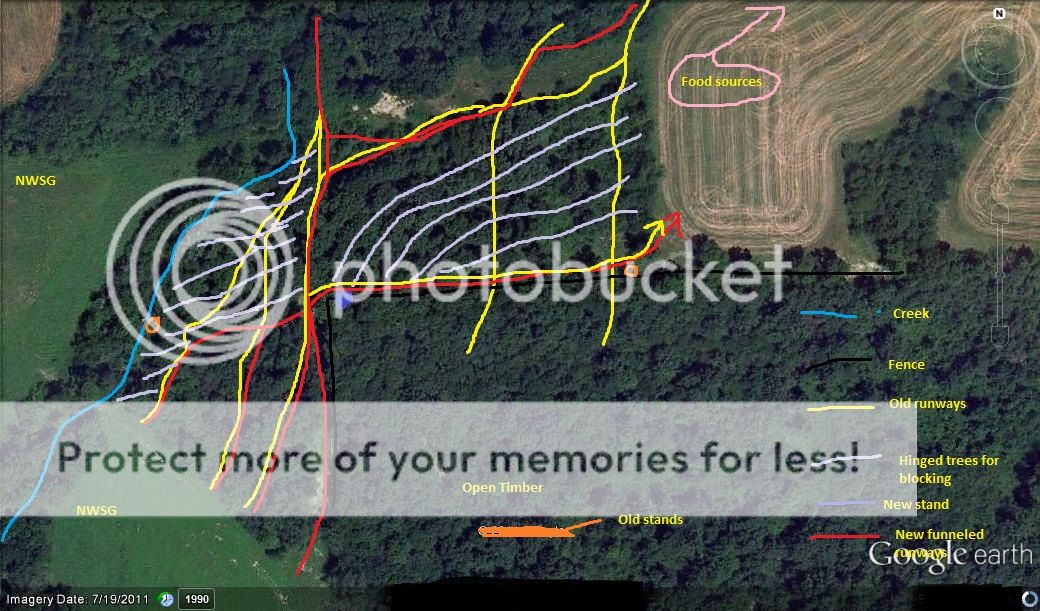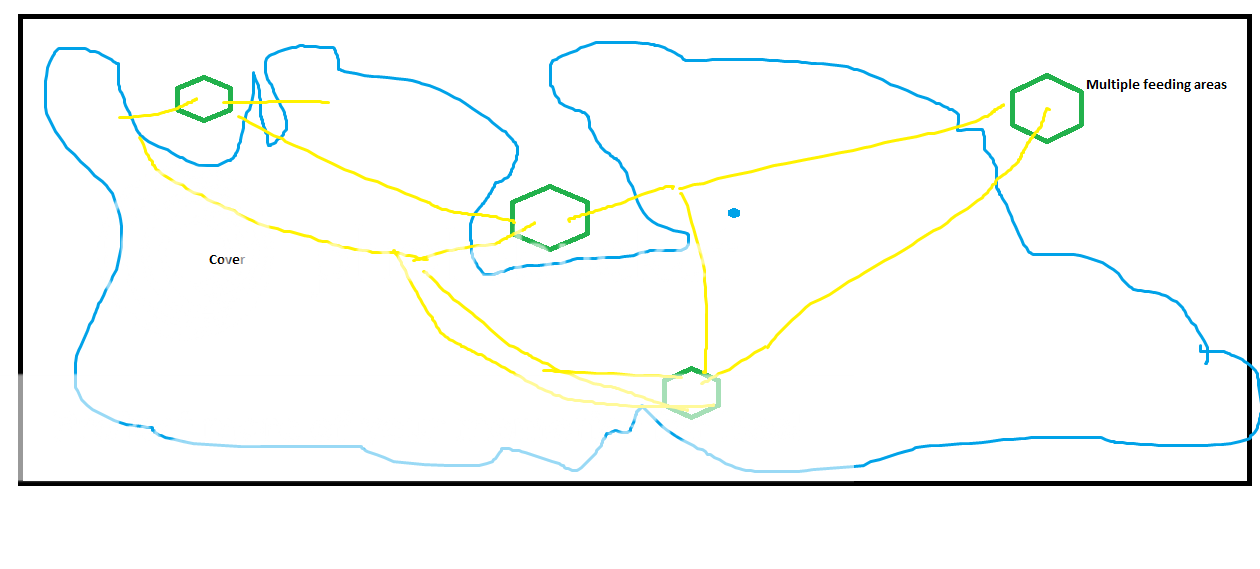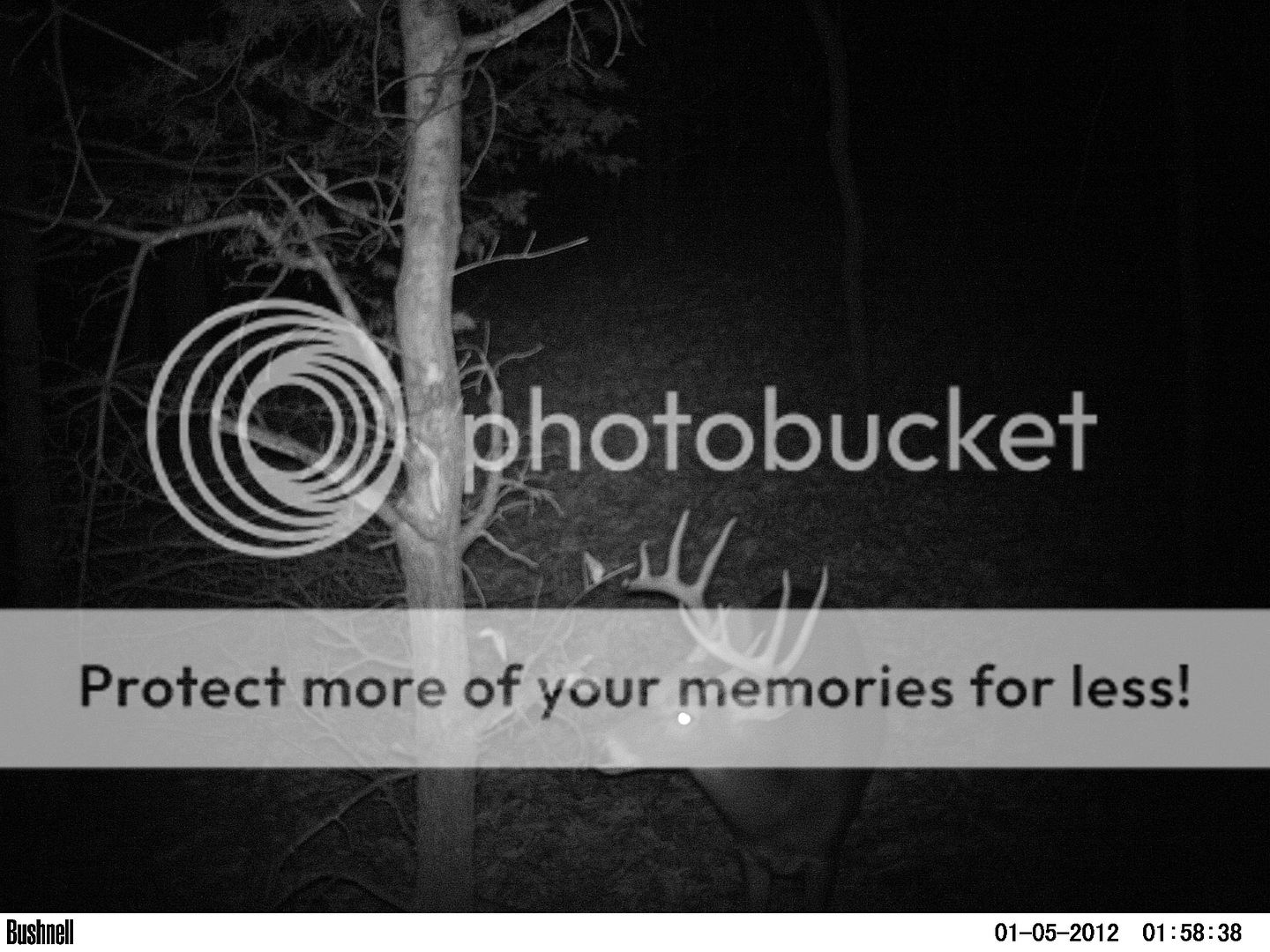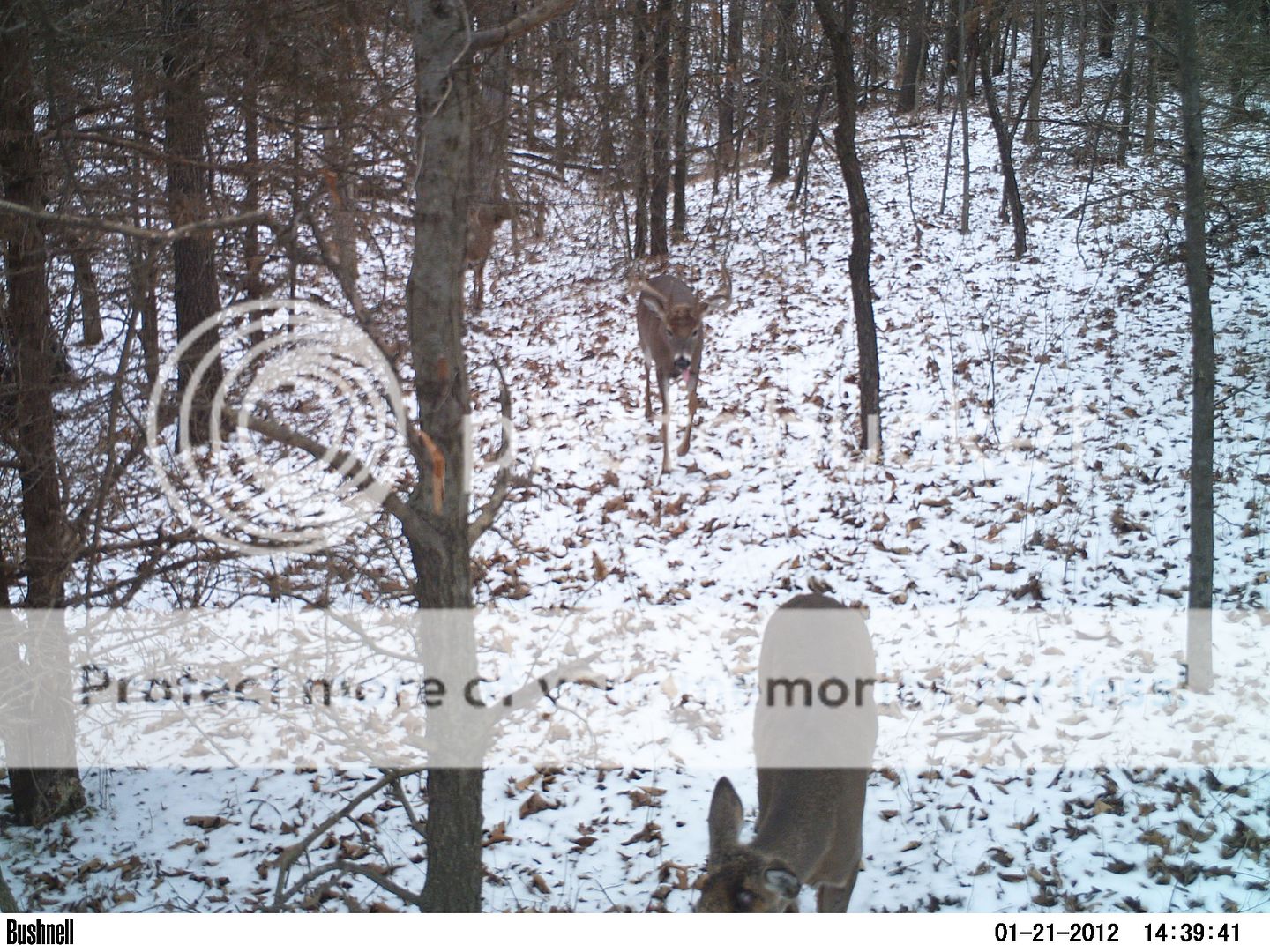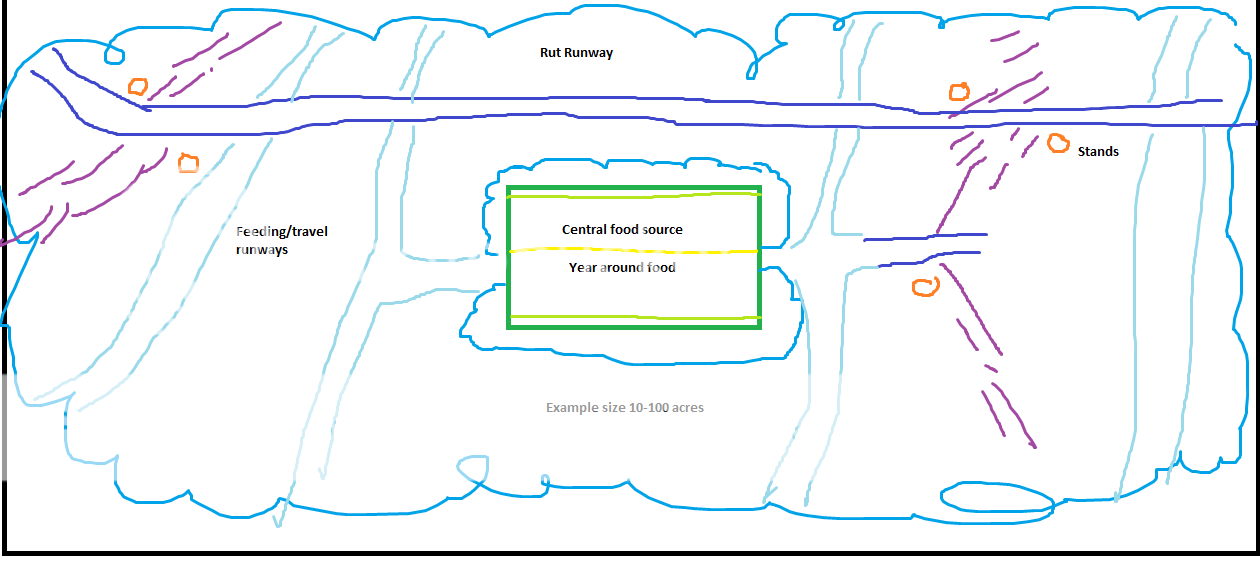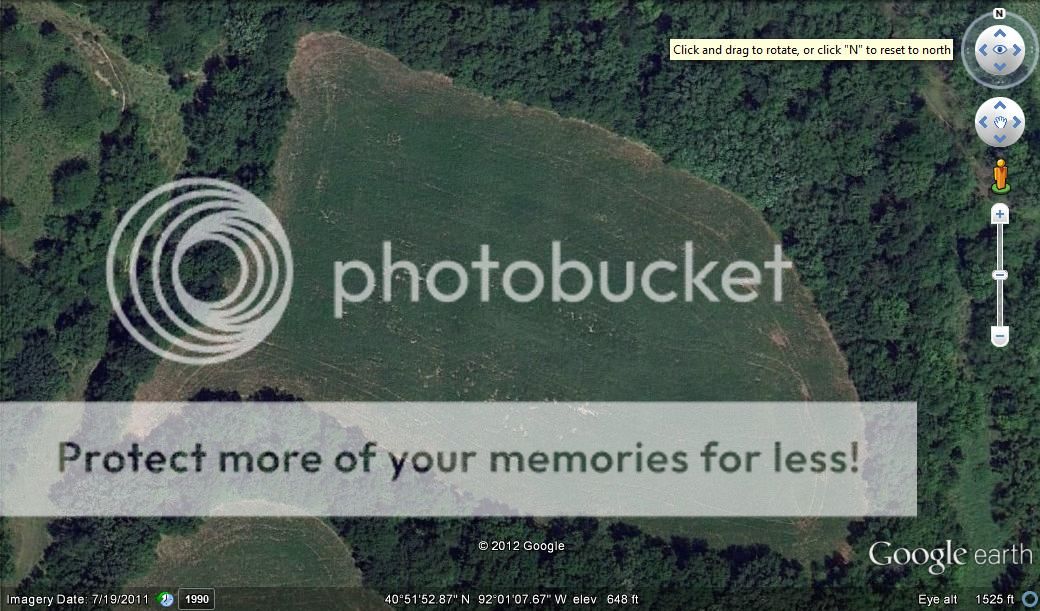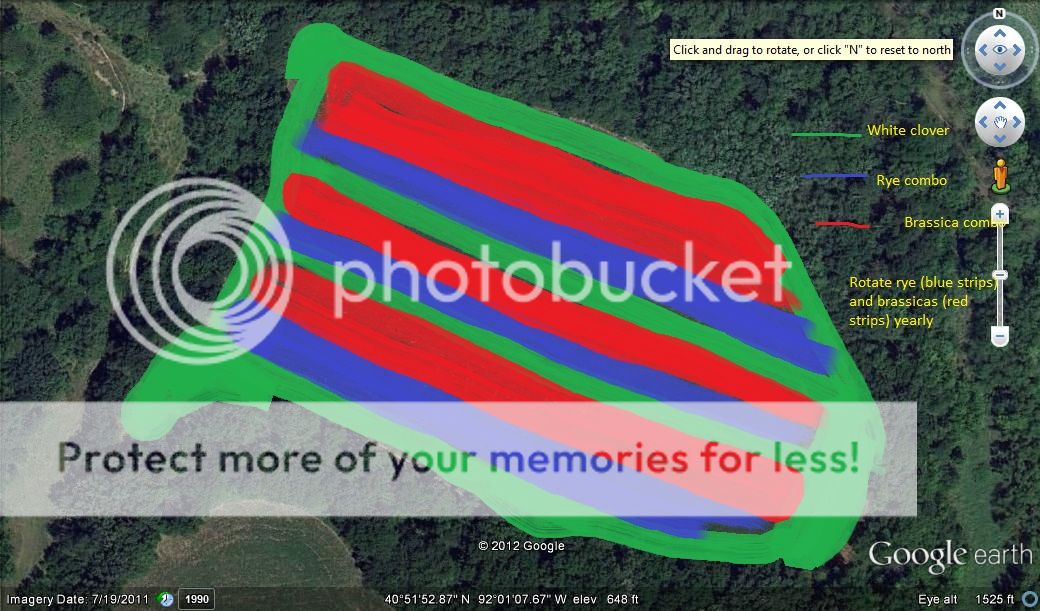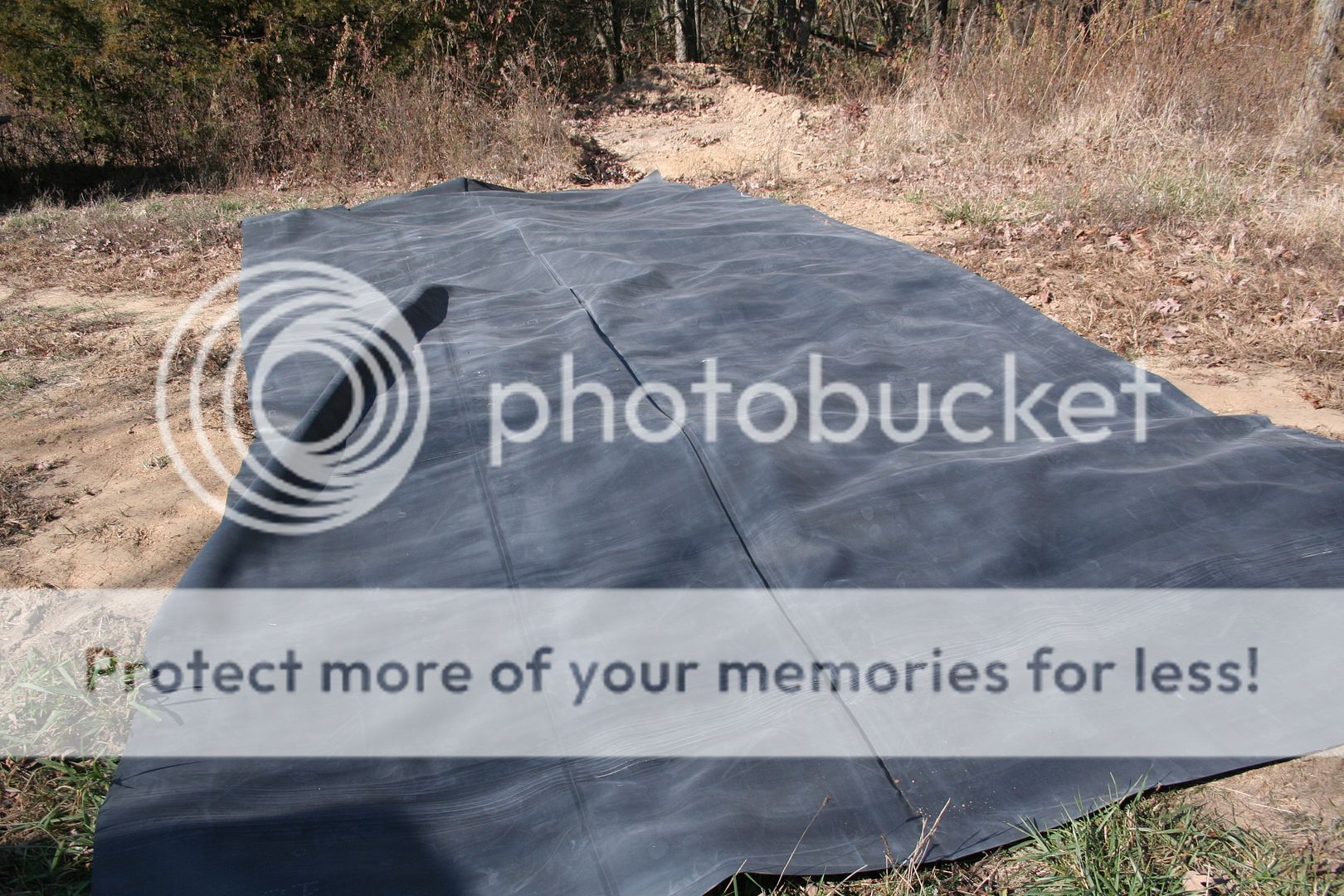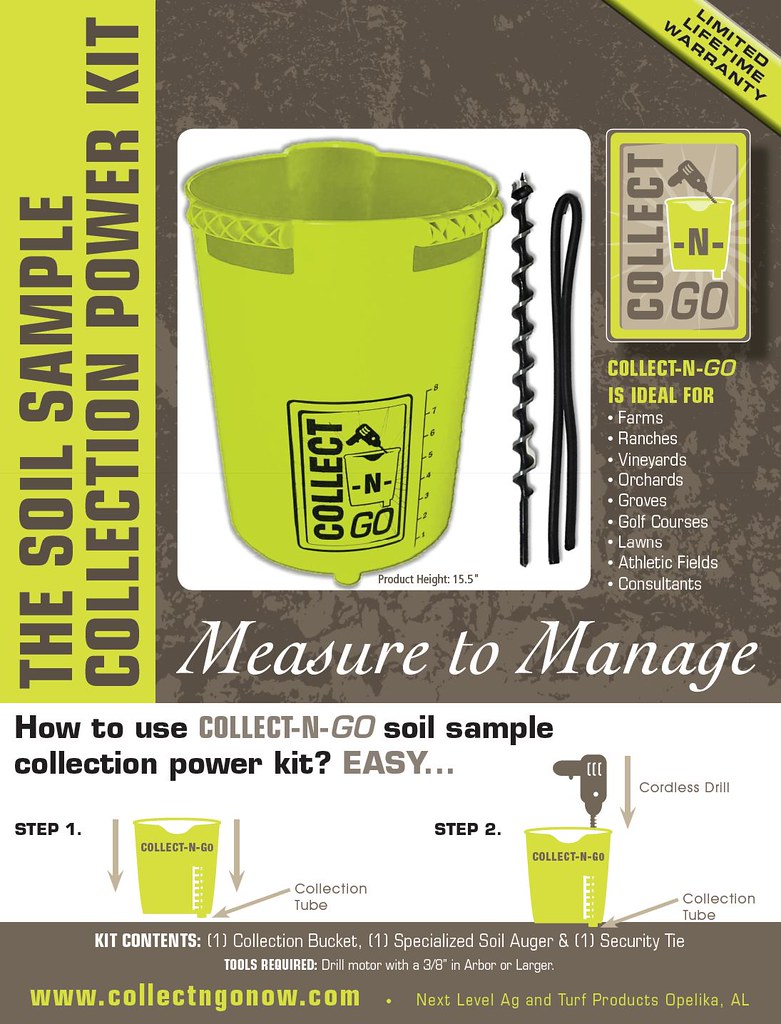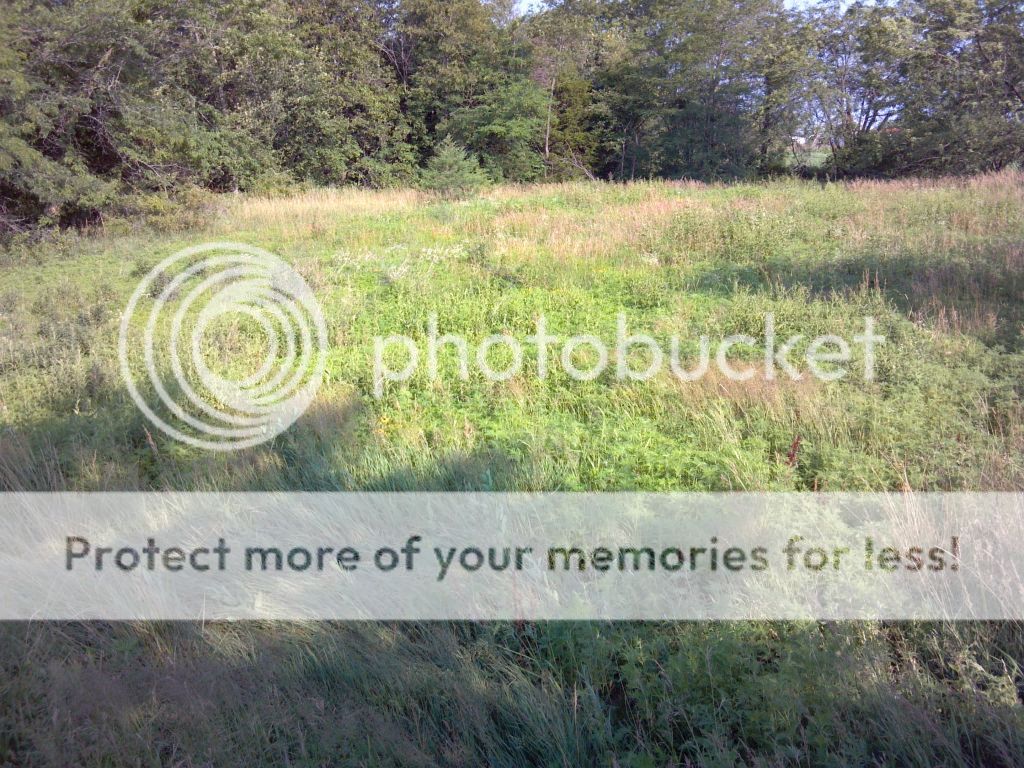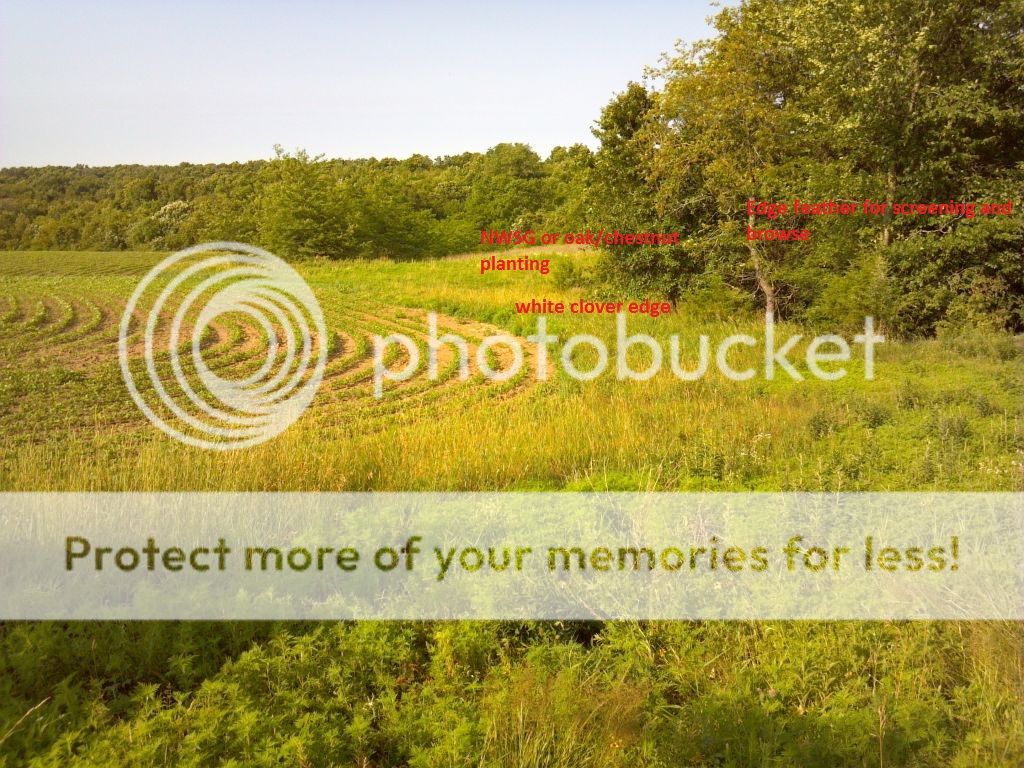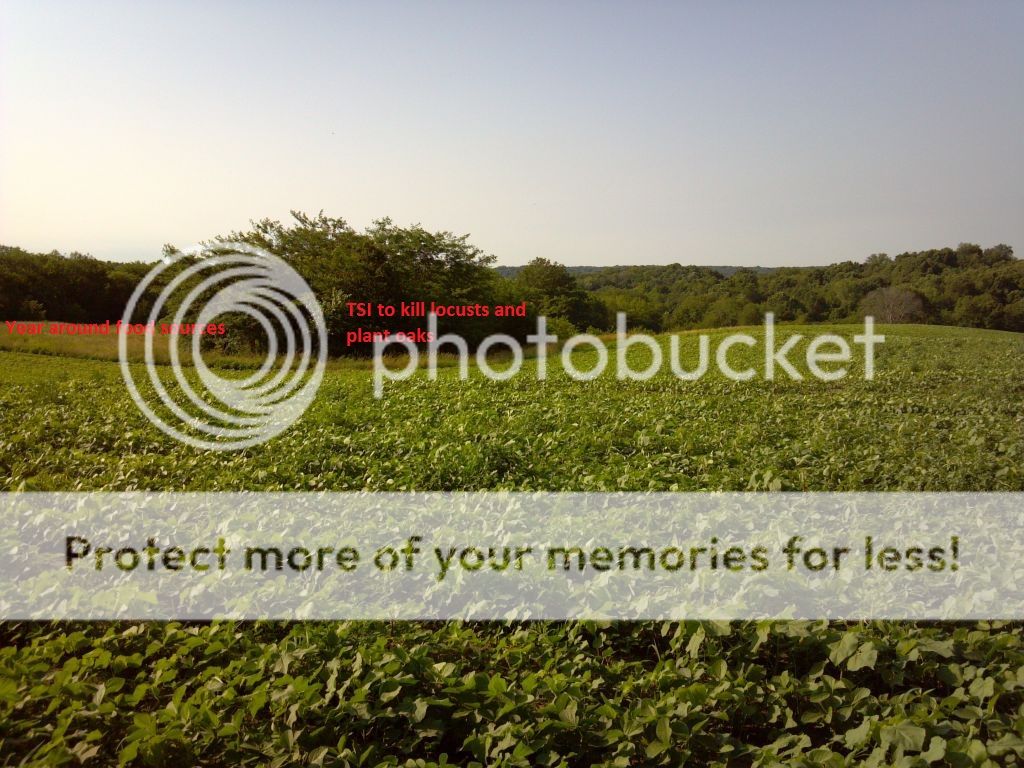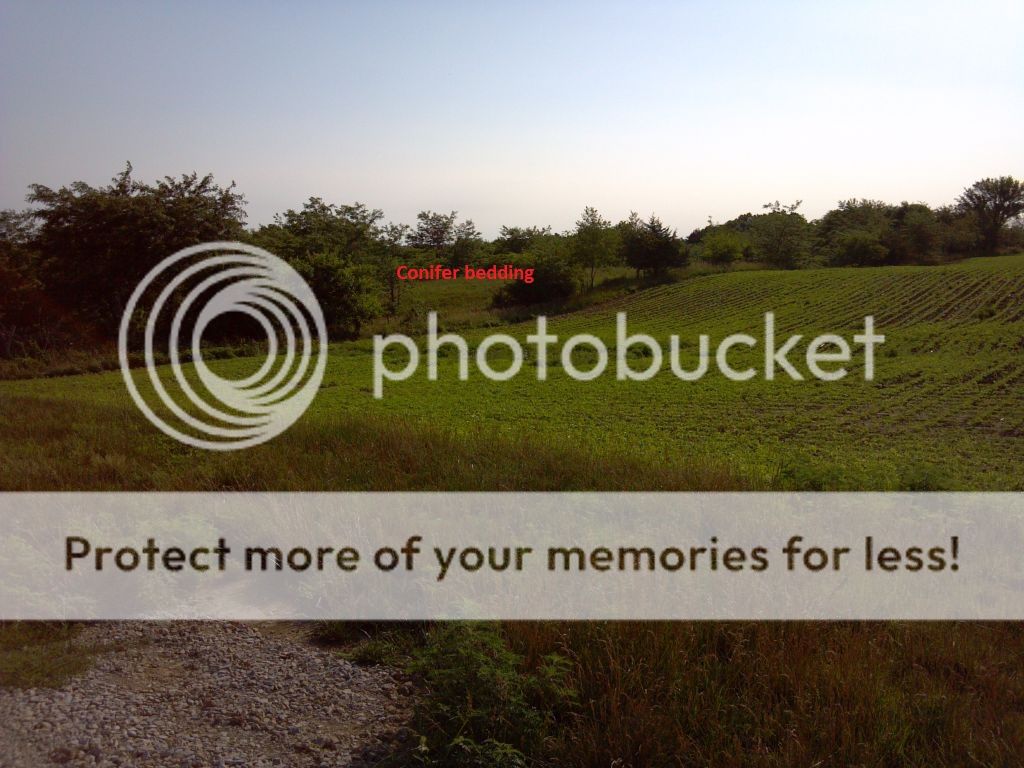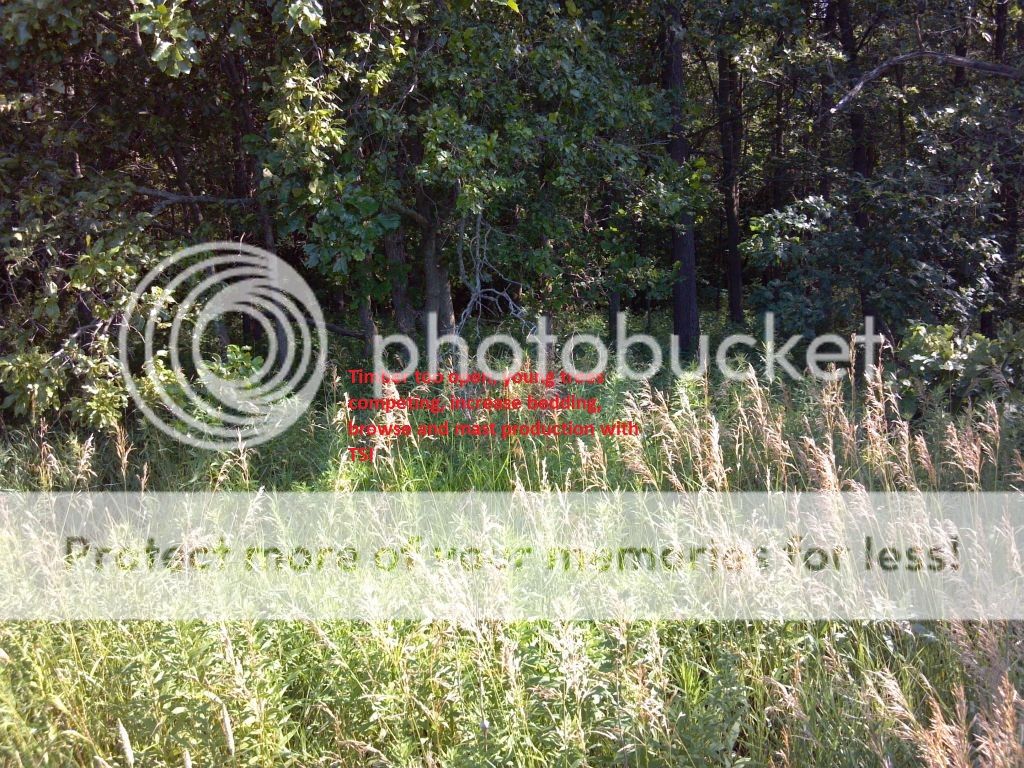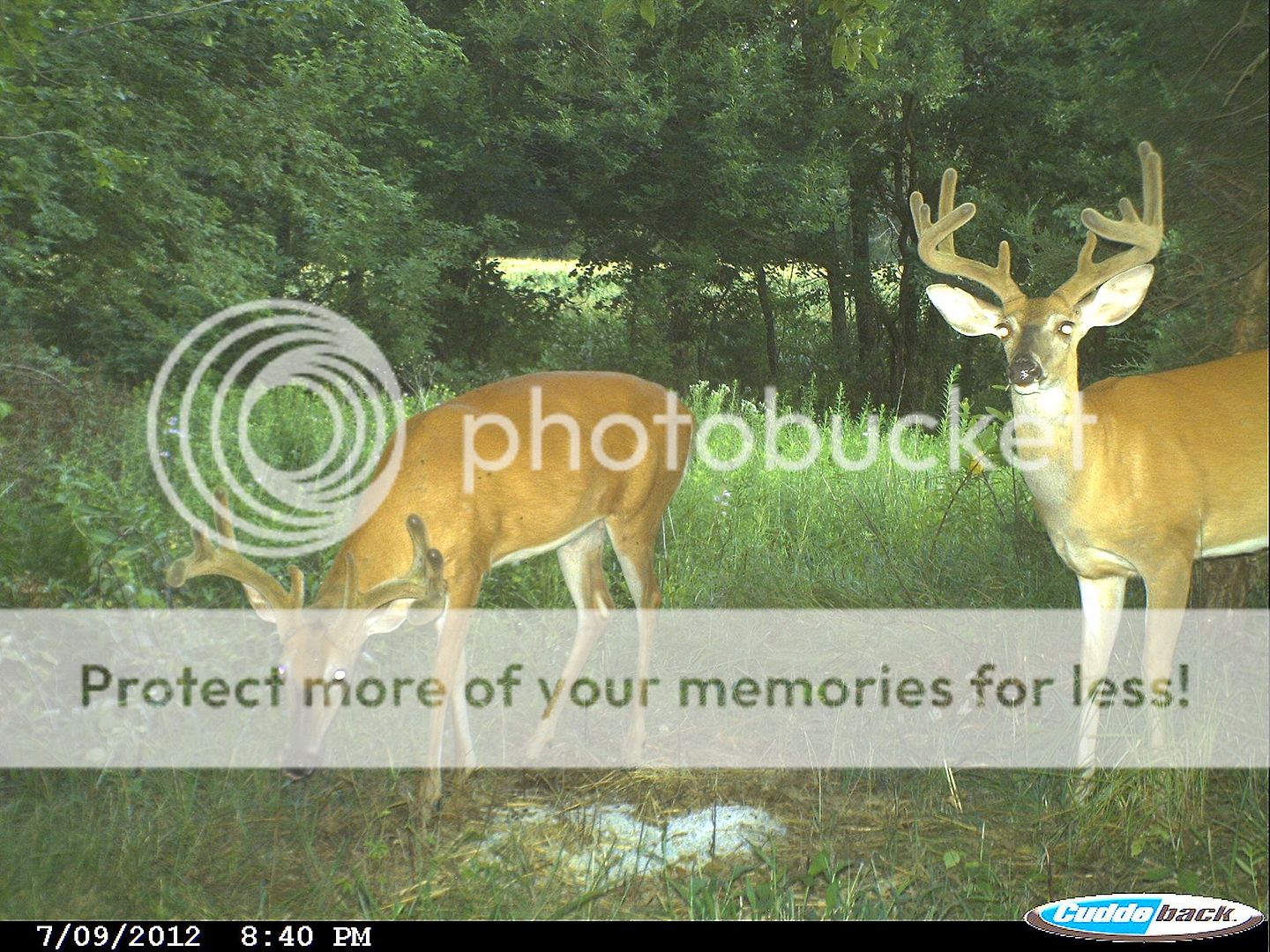Lost Arrow
Member
Trail Cams
Trail cams are an essential tool in helping landowners properly manage both their habitat and the whitetails that inhabit it and properly used they can yield answers that will making owning and hunting your land more enjoyable. That said, trail cams may not be financially feasible for landowners struggling to make a farm payment, so use caution to put your family first and prioritize your habitat management expenditures and add cams when possible.

Too often habitat management and hunting decisions are based solely on our personal observations yet we can not possibly "observe" 24-7 like trail cams can so when possible it is imperative to use them and to use them wisely. There are a multitude of cams to choose from and forums such asChasingame can help you decide which is best for you and your needs. I use Bushnell Trophy cams because they are economical and very functional with outstanding battery life and a 2 year warranty. These cams are IR but not black flash so where possible I mount them above the deer's line of sight and tilt them downward...easy to do with a 1/4-20 eye bolt and eye screw with a 1/4-20 bolt and sheet metal washers. I carry a feather lite step ladder to mount and check cams...

They can be mounted to blinds or to a step in electric fence post for field scan pics

Whitetails often feed after dark and mature bucks are notoriously nocturnal and often difficult to pattern and on top of this, younger bucks will often run does out of feeding and even bedding ares during the rut making "observations" a very poor indicator of what is using your habitat. Trail cams provide answers and help us make necessary improvements and changes to our habitat programs and hunting methods and help us determine age structure and population densities.
To often landowners lament that deer are not using their plot or one food source or another when in reality they may have few if any deer even using their property. Natural forage and mast and/or plentiful ag crops can have a dramatic effect on how or if whitetails use your property. Food of course is only part of the equation and it must be surrounded by safe screening and secure bedding and if any or all of those factors are missing...the whitetails will be too.
Without cams no one can be certain of what is going on and that leads to false assumptions and misconceptions about a perceived lack of deer or mature bucks using the property. Our immediate focus should always be on building a secure bedding sanctuary yet everyone incorrectly believes that a food plot is the missing link. The following are some real live examples of habitat and the deer using them along with trail cam placement and the answers they yield in hopes they will give you ideas for your own property. In particular pay attention to the lives of a couple mature bucks that are almost 100% nocturnal...leaving no trace or evidence of their existence if we relied solely on "observations"....

In this example on my own farm the cams there are 6 cams located within a very small area and the are marked as dark maroon color and 3 stands/blinds. The edge is blocked by edge feathering leaving only one main crossing and the farm lane and small trail that they use to go to the pond for water. Nearly 50 acres of NWSG combined with thick red cedar and hinged tree bedding areas provide the cover and the centrally located feeding area is the focus of every whitetail's movement regardless of where they bed.

Note above that the light green is white clover strips along the edges, the dark green is edge feathering blocking off multiple runways, strip plots are individual strips of white clover, brassicas and the winter rye/oat/pea/radish/red clover combination. These combined with standing soybeans and a larger plot of winter rye combination provide food sources YEAR AROUND in ONE SINGLE feeding area that adapts deer to always feeding there.
This mature 5 1/2 year old buck only showed himself once last year during daylight hours and he almost never enters the timber for more then a few yards into the interior, living instead in the surrounding NWSG fields.

If not for cams i would never know this buck existed and believe, mistakenly that no mature animals lived on my property and then I would begin to question my habitat. This buck appears almost daily, goes in and out the exact same way and comes from the CRP/NWSG fields beyond.



He is very predictable yet as elusive as a ghost making him a challenging quarry




He enters and exits by the same routes..yet always, always in the dark




Trail cams are an essential tool in helping landowners properly manage both their habitat and the whitetails that inhabit it and properly used they can yield answers that will making owning and hunting your land more enjoyable. That said, trail cams may not be financially feasible for landowners struggling to make a farm payment, so use caution to put your family first and prioritize your habitat management expenditures and add cams when possible.

Too often habitat management and hunting decisions are based solely on our personal observations yet we can not possibly "observe" 24-7 like trail cams can so when possible it is imperative to use them and to use them wisely. There are a multitude of cams to choose from and forums such asChasingame can help you decide which is best for you and your needs. I use Bushnell Trophy cams because they are economical and very functional with outstanding battery life and a 2 year warranty. These cams are IR but not black flash so where possible I mount them above the deer's line of sight and tilt them downward...easy to do with a 1/4-20 eye bolt and eye screw with a 1/4-20 bolt and sheet metal washers. I carry a feather lite step ladder to mount and check cams...

They can be mounted to blinds or to a step in electric fence post for field scan pics

Whitetails often feed after dark and mature bucks are notoriously nocturnal and often difficult to pattern and on top of this, younger bucks will often run does out of feeding and even bedding ares during the rut making "observations" a very poor indicator of what is using your habitat. Trail cams provide answers and help us make necessary improvements and changes to our habitat programs and hunting methods and help us determine age structure and population densities.
To often landowners lament that deer are not using their plot or one food source or another when in reality they may have few if any deer even using their property. Natural forage and mast and/or plentiful ag crops can have a dramatic effect on how or if whitetails use your property. Food of course is only part of the equation and it must be surrounded by safe screening and secure bedding and if any or all of those factors are missing...the whitetails will be too.
Without cams no one can be certain of what is going on and that leads to false assumptions and misconceptions about a perceived lack of deer or mature bucks using the property. Our immediate focus should always be on building a secure bedding sanctuary yet everyone incorrectly believes that a food plot is the missing link. The following are some real live examples of habitat and the deer using them along with trail cam placement and the answers they yield in hopes they will give you ideas for your own property. In particular pay attention to the lives of a couple mature bucks that are almost 100% nocturnal...leaving no trace or evidence of their existence if we relied solely on "observations"....
In this example on my own farm the cams there are 6 cams located within a very small area and the are marked as dark maroon color and 3 stands/blinds. The edge is blocked by edge feathering leaving only one main crossing and the farm lane and small trail that they use to go to the pond for water. Nearly 50 acres of NWSG combined with thick red cedar and hinged tree bedding areas provide the cover and the centrally located feeding area is the focus of every whitetail's movement regardless of where they bed.

Note above that the light green is white clover strips along the edges, the dark green is edge feathering blocking off multiple runways, strip plots are individual strips of white clover, brassicas and the winter rye/oat/pea/radish/red clover combination. These combined with standing soybeans and a larger plot of winter rye combination provide food sources YEAR AROUND in ONE SINGLE feeding area that adapts deer to always feeding there.
This mature 5 1/2 year old buck only showed himself once last year during daylight hours and he almost never enters the timber for more then a few yards into the interior, living instead in the surrounding NWSG fields.

If not for cams i would never know this buck existed and believe, mistakenly that no mature animals lived on my property and then I would begin to question my habitat. This buck appears almost daily, goes in and out the exact same way and comes from the CRP/NWSG fields beyond.



He is very predictable yet as elusive as a ghost making him a challenging quarry




He enters and exits by the same routes..yet always, always in the dark






